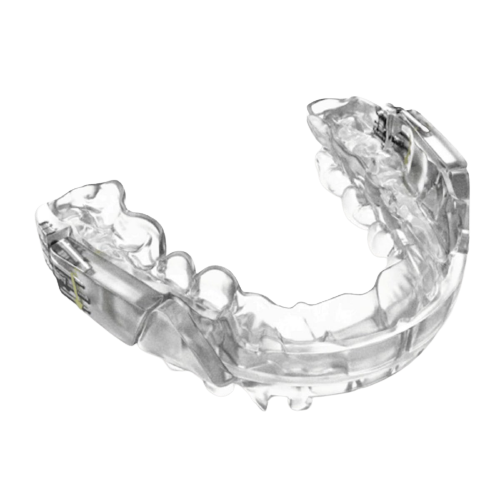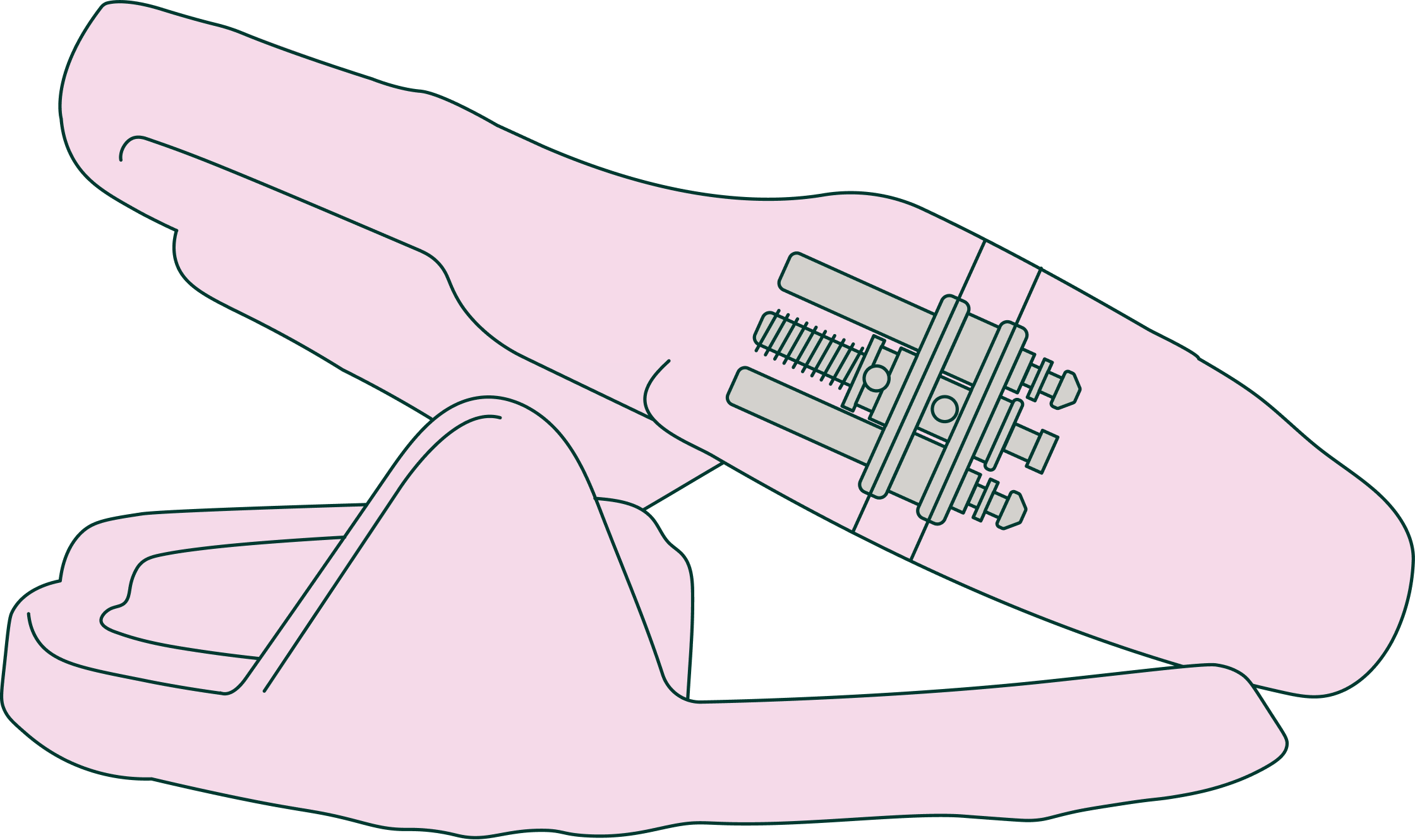Dorsal Sleep Appliance
The Dorsal is a two-piece design removable appliance with separate upper and lower acrylic portions. When engaged, the dorsal protrudes the mandible forward to relieve snoring and obstructive sleep apnea (OSA). The separate two piece construction is desirable for patients that want greater range of motion and lateral excursion.

Take some time to learn more about taking your practice digital with the nations first and only digital dental lab.
Indications for Use
The Dorsal Sleep appliance is intended to reduce night time snoring and mild to moderate obstructive sleep apnea (OSA) in adults. The device is worn while sleeping to support the lower jaw in a forward position prescribed by the dentist, and is removable by the patient.

Mandibular Guidance
Mandibular Opening
Standard mandibular opening for a snoring/sleep apnea device is 3-4 mm between the maxillary and mandibular teeth.
This allows for increased air volume and facilitates airway opening.
Mandibular Advancement
Standard mandibular advancement for a snoring/sleep apnea device is situation dependent. Generally,the mandible is advanced between 5-7mm from the patient’s centric occlusion for proper appliance construction. Typically, the forward mandibular position will cause increased air volume in the patient’s pharyngeal space.
Ready to start offering dorsal sleep appliances at your practice?
Dorsal Sleep Appliance Best Practices
Place the upper device in your mouth and press up on the device with both thumbs to ensure that it fits securely and comfortably.
Generally it is good to start the device in the starting position, or the smallest level of protrusion. In some cases, the device may need to be titrated forward (adjust forward) to further open the airway. The device can be adjusted over time based on patient comfort and what is effectively treating the sleep apnea.
Once the upper and lower devices are securely in position, bring the patient’s lower jaw slightly forward to allow the ‘wings ‘ to engage. Slowly close the patient’s mouth until their lips lightly touch each other (this may not always create lip seal).
Always remove the lower device first, using your thumbs on both
sides, gently pull the lower device in an upwards motion to remove. Using both your index fingers and thumbs, gently pull the upper device down
and forwards to remove.
Explore the Dorsal Sleep Appliance
The Dorsal sleep appliance arches are milled from an acrylic disk. The fins and drive block are made out of acrylic, and the metal mechanism within the drive block is made out of titanium
All Dandy sleep apnea customers receive an exclusive discount with our medical billing partner, Nierman Practice Management.
Dorsal Appliance for Sleep Apnea FAQ
Your patient may experience some temporary side effects, such as sore jaw joints, increased salivation, dry mouth, sore teeth, irritation of the soft tissues in the mouth and/or a slight change in your bite. These possible side effects should diminish within an hour of removing the device. If any of these side effects continue, your patient should contact you immediately.
The Dorsal sleep appliance has two completely separate arches allowing more vertical movement, with no metal hinge for additional comfort.
Other appliances can lock patient’s arches together, limiting essentially all movement vertically and horizontally. This can be very uncomfortable for the patient; it may be particularly troublesome for patients who have bruxism. Cheaper appliances depend on acrylic notches and rubber bands; which has been found to be less durable.
Ready to use Dandy as your new sleep appliances lab?
Talk to our team about your practice getting started with Dandy. We’ll answer your questions and tell you about our digital dental services.
Take some time to learn more about taking your practice digital with the nations first and only digital dental lab.